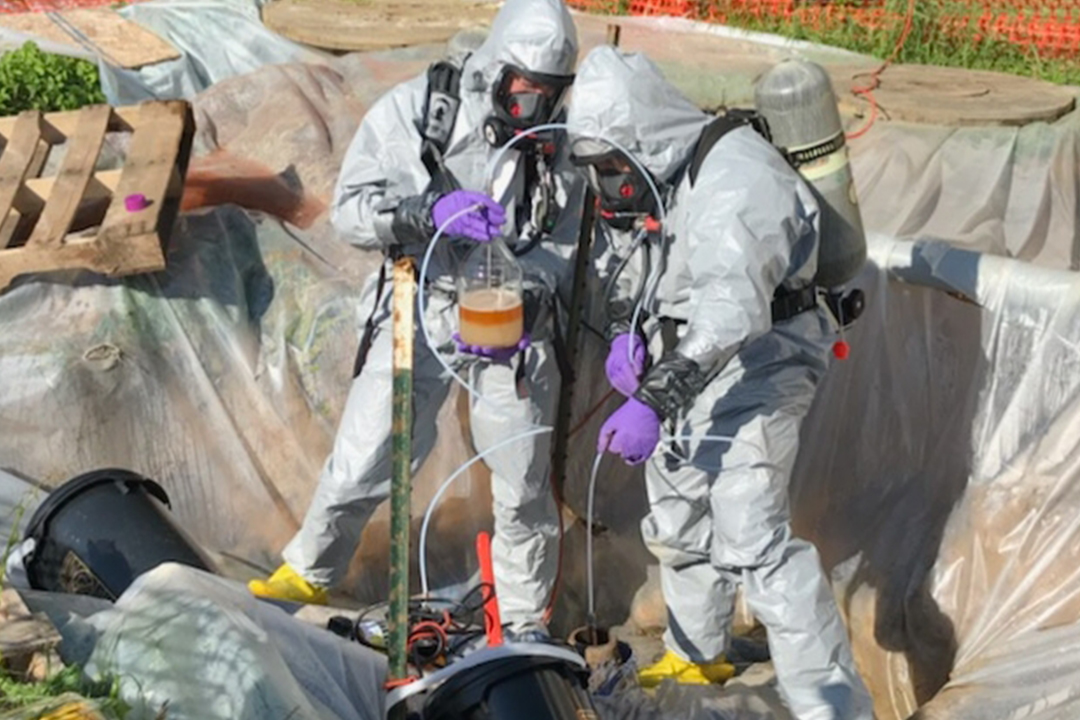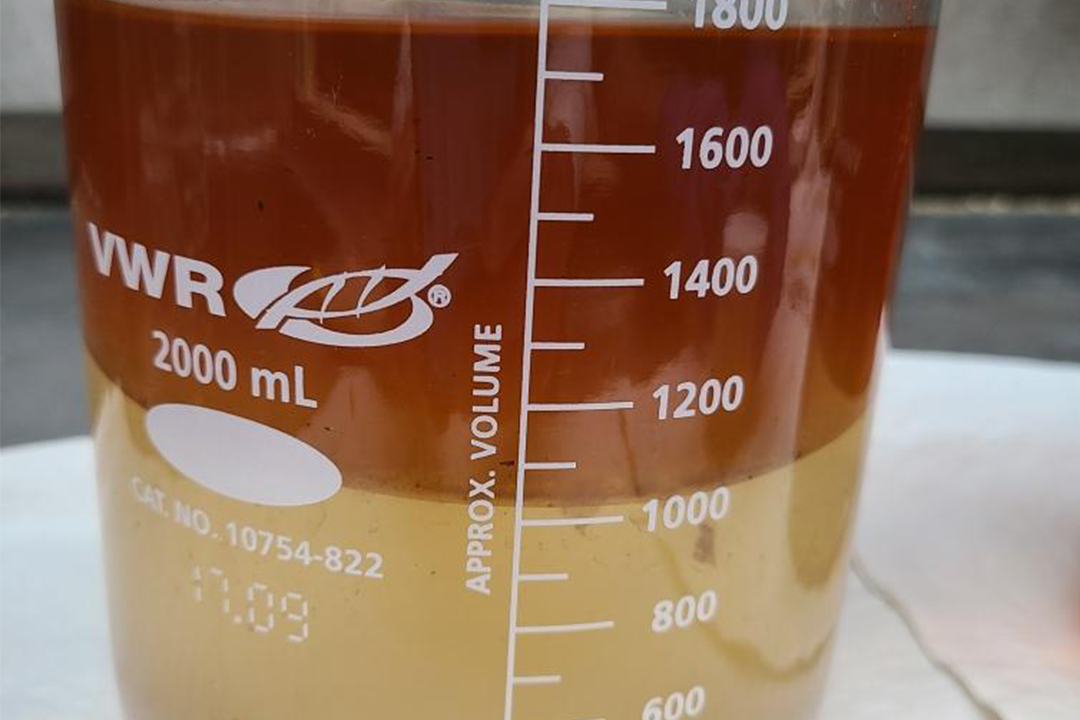// NEWS RELEASE
CBARR Supports APG Garrison in Mystery Storage Tank Mission
CCDC Chemical Biological Center Public Affairs | September 17th, 2020
CBARR Supports APG Garrison in Mystery Storage Tank Mission
DEVCOM CBC Public AffairsSeptember 17th, 2020

Chemical biological operations personnel from the Center’s Chemical Biological Application and Risk Reduction unit conduct a Level-B sampling mission at the site of a discovered underground storage tank on Aberdeen Proving Ground South.
Aberdeen Proving Ground, MD – Recently, an electrical utility contractor digging a trench near a building on Aberdeen Proving Ground (APG) Edgewood Area/APG South found an unidentified underground storage tank (UST) surrounded by mercury contaminated soil. Due to the unknown nature of this particular UST and its proximity to former World War I/World War II chemical agent production facilities, the Garrison Directorate of Public Works Environmental Division (DPW-ED) contacted the U.S. Army Combat Capabilities Development Command (CCDC) Chemical Biological Center’s Chemical Biological Application and Risk Reduction (CBARR) unit.
According to Andy Murphy, an environmental protection specialist at the DPW-ED Waste Management Branch, there is historical information on the placement of most legacy USTs and other subsurface systems used to convey and/or store petroleum and hazardous substances. Most of the older underground fuel oil tanks were removed by the APG Oil Control Program in the early 1990s and were replaced with aboveground, double-walled tank systems. “That being said, surprises such as this are not uncommon,” said Murphy.

Using materials they had on hand, the CBARR team created a custom sampling apparatus in order to collect nearly four liters of a bi-phasic liquid sample from over 10 feet below ground level.
The initial analysis on the UST sample was performed by CBARR’s Environmental Monitoring Lab (EML). The testing conducted by the EML was critical as it was able to confirm that no chemical warfare agent (CWA) was present in the UST. Once any CWA was ruled out, the Garrison was able to safely send out samples to commercial labs to conduct additional analysis required to identify the contents for disposal.
Sample analysis from the EML did indicate the presence of both water and numerous hydrocarbons, however. This suggested the long-abandoned UST was likely for storage of heating or generator fuel and has since been exposed to rain or ground water. “The analytical information supplied by the CBARR lab provided ample information that pointed to #2 heating oil and water mixture. Subsequent analysis done by our environmental laboratory further reinforced this information, and provided data needed to characterize the waste fuel/water mixture for compliant off-site disposal,” added Murphy.
CBARR also conducted chemical agent monitoring throughout the operation. This ensured the protection of onsite workers as well as results that document no fugitive CWA emissions were released into the environment.
The mission was not without challenges, namely working in an environment highly contaminated with mercury and during a global pandemic.
“To facilitate CBARR’s UST sampling effort and mitigate potential exposures to the mercury contamination, the Garrison covered the mercury contaminated soil with plastic. CBARR personnel also wore PPE as an additional precaution,” said Murphy.
As for COVID-19 challenges, Brandon Bruey, a supervisory chemist in the Chemical Biological Operations Branch, said that working remotely added an extra layer to getting the job done. For example, there were teleconferences and phone calls instead of face-to-face meetings and documents had to be emailed back and forth. Nevertheless, the team’s persistence demonstrated how the workforce could still accomplish the mission, despite the vast majority of personnel being on remote work status. The many restrictions and approvals needed to access APG just added another layer of effort. Because of social distancing, the team also had to look for alternative ways to do things, such as removing PPE when leaving the hot zone which is normally done with the help of other people.
All said and done, the UST sampling operation was conducted in a rapid and safe manner to provide the Garrison with the confidence needed to proceed with remediation.
The U.S. Army Combat Capabilities Development Command (DEVCOM) leads in the discovery, development and delivery of technology-based capabilities to enable Soldiers to win our nation’s wars and come home safely. DEVCOM is a major subordinate command of the U.S. Army Futures Command. The DEVCOM Chemical Biological Center is the Army’s principal research and development center for chemical and biological defense technology, engineering and field operations. The DEVCOM Chemical Biological Center is headquartered at Aberdeen Proving Ground, Maryland.
